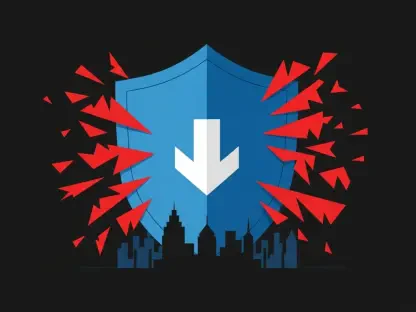The landscape of property insurance has undergone significant transformation as catastrophic events continue to surge in both frequency and unpredictability. These developments have prompted a reevaluation of traditional risk assessment models and coverage strategies, urging professionals within the insurance sector to adapt swiftly. In recent years, conventional views of disaster-prone areas have been challenged. A striking example is the unexpected impact of Hurricane Helene on Asheville, North Carolina, an area previously considered relatively safe due to its distance from coastlines. This redefined perception of “secondary perils” reflects a broader need to reassess how risks are measured and managed. The need for adaptation has become critical as the geographical spread of these events broadens, pushing the industry to innovate in response to new threats. Amid these challenges, there is an emerging necessity for insurance professionals, especially in the Excess and Surplus (E&S) market, to not only manage these changes but to effectively sustain relationships with clients through this period of uncertainty.
Transformation in Property Insurance
Over recent years, the property insurance sector has faced an evolving landscape due to a marked increase in catastrophic events, forcing a significant reassessment of practices. Historical approaches focused on named windstorms as the primary drivers of property losses, yet recent data highlights convective storms as the main culprits in 2023. Furthermore, the rise of wildfires, prominently since the Tubbs Fire in 2017 resulting in over $5 billion in property losses, has emphasized new areas of concern. Previously insulated regions are now susceptible, altering risk profiles and challenging traditional underwriting methodologies. Financial impacts are substantial, exceeding $100 billion globally in insured property damage, suggesting these figures will escalate. This scenario compels a shift towards the E&S market, privileged with handling more complicated risks by dispersing exposure across multiple carriers. The standard lines property market, burdened by increasing complexities, sees its transformation as a necessary response to protect not only assets but also its financial viability.
Addressing Financial Complexities
The financial ramifications prompted by these evolving disaster patterns present daunting challenges to the property insurance industry. Since 2017, more than $100 billion in insured property damage has revamped the dynamics within the market. Building values rise in tandem with the frequency and severity of losses, compounding risks for insurers tasked with underwriting increasingly large exposures. This tricky scenario is exacerbated by post-COVID inflation, which has spiked building material and labor costs. For instance, consider a $2 billion-valued hospital; the standard market may insure it for only a $750 million loss limit, a significant risk for the carrier. The E&S market stands out by distributing risks across carriers to manage larger exposures efficiently. For a singular carrier, managing a $5 million loss is practical compared to facing a $750 million one. As a result, E&S underwriters are prompted to reevaluate risk assessment methodologies, incorporating data analytics to achieve a precise evaluation of property exposure and to streamline valuation accurately.
Collaborative Initiatives in Risk Management
In this volatile landscape, the importance of cultivating robust relationships among brokers, carriers, and clients cannot be overstated. Effective partnerships are crucial as carriers aim to transition from mere risk pricing to becoming strategic partners in risk mitigation and resilience-building. Brokers should align with transparent carriers focused on loss prevention and showcase dedicated underwriters esteemed as trusted advisors within the industry. Consistency in providing comprehensive, reliable programs without sudden changes is paramount to nurturing trust—an invaluable asset amid market volatility. In this collaborative paradigm, loss prevention strategies benefit policyholders and fortify the enduring stability of insurance companies. Industry-wide cooperation in identifying potential hazards preemptively allows for more effective navigation of the complex risk landscape. Embracing innovation and collaboration are critical in addressing these multifaceted challenges, fostering a progressive mindset that aligns with both evolving market demands and global conditions.
A Paradigm Shift in Risk Strategy
The property insurance landscape has been significantly altered due to the increasing frequency and unpredictability of catastrophic events. These changes demand a reevaluation of traditional risk assessment models and coverage strategies, leading insurance professionals to adapt quickly to the evolving environment. Previously held beliefs about disaster-prone areas are being challenged, exemplified by Hurricane Helene’s unexpected impact on Asheville, North Carolina—a location once thought safe due to its inland position. This shift in understanding regarding “secondary perils” highlights the necessity to reevaluate risk measurement and management practices. As the geographical reach of such events expands, the industry is pushed towards innovation to address emerging threats. Amid these challenges, it is crucial for insurance experts, especially in the Excess and Surplus (E&S) market, to navigate these changes while maintaining strong client relationships during this period of uncertainty.









